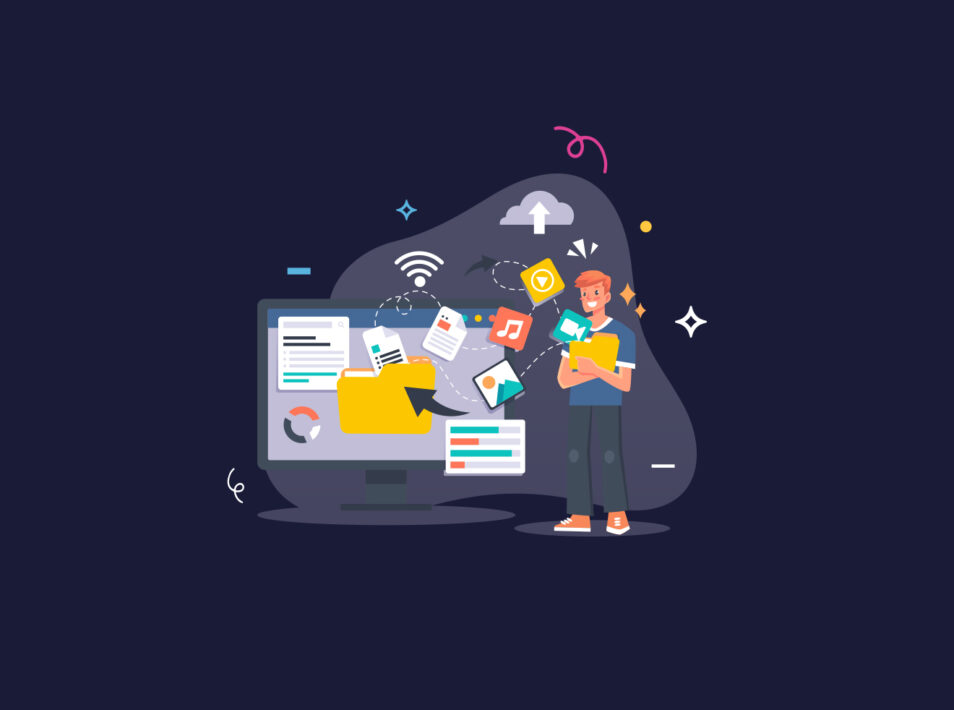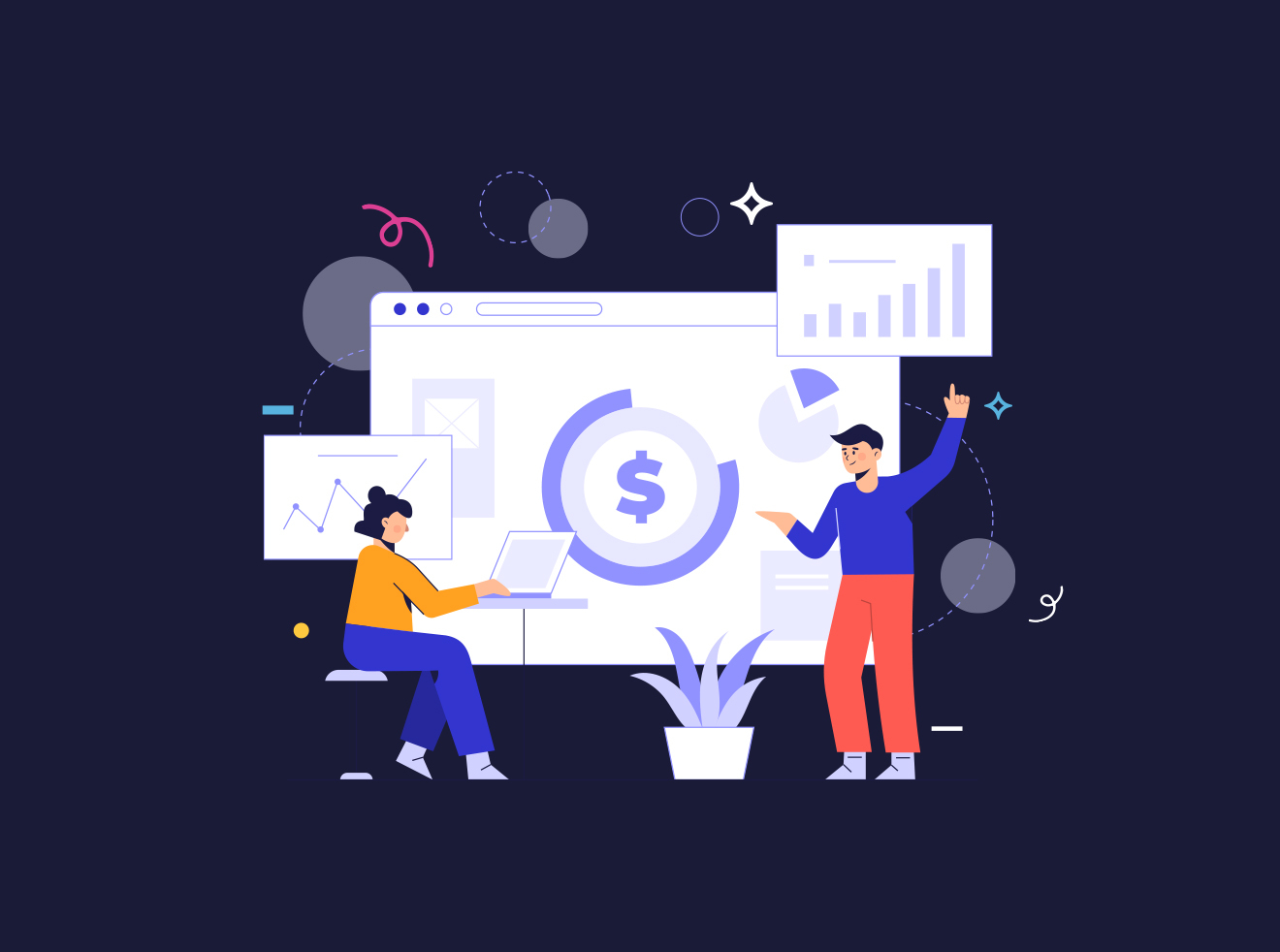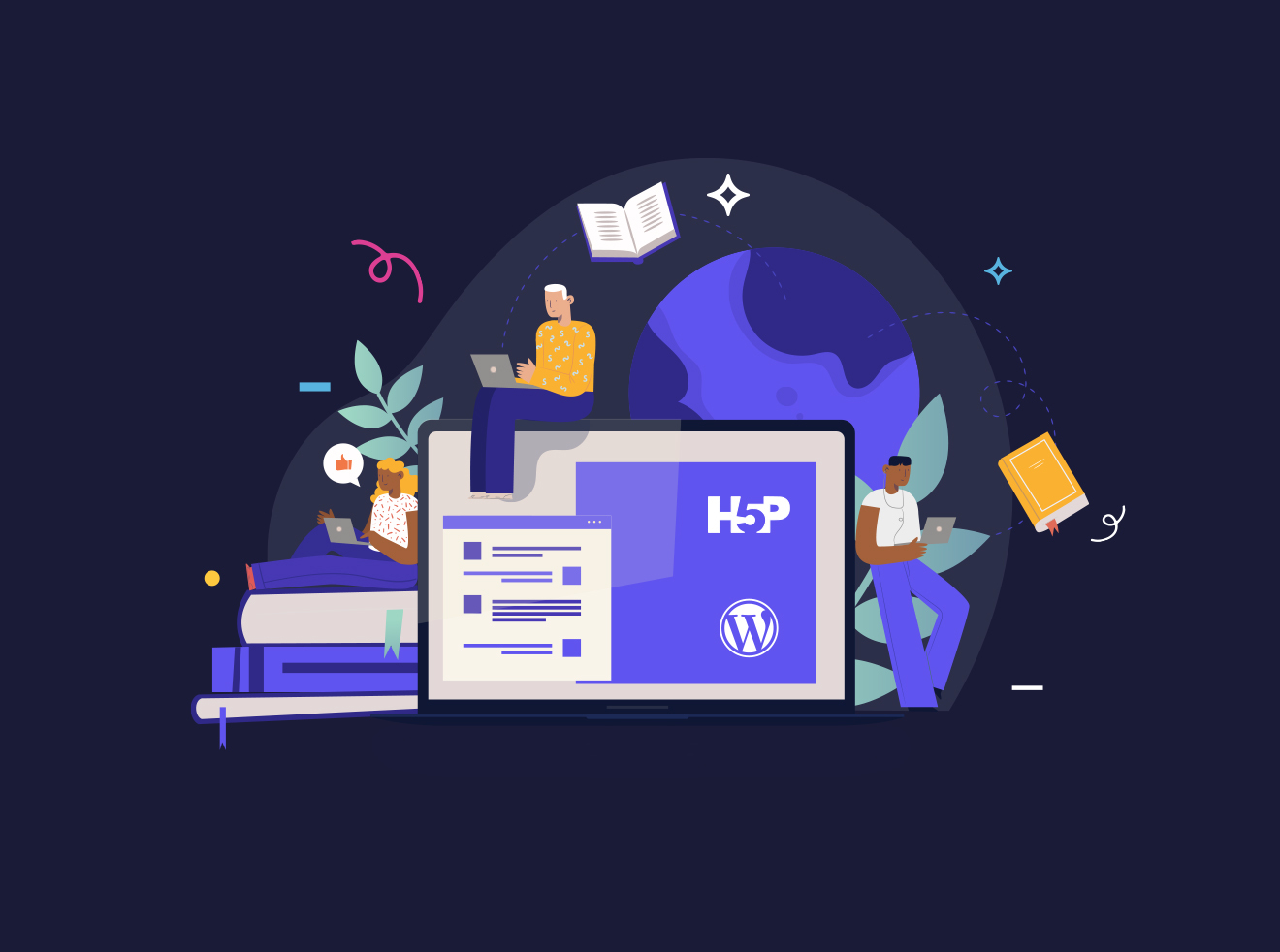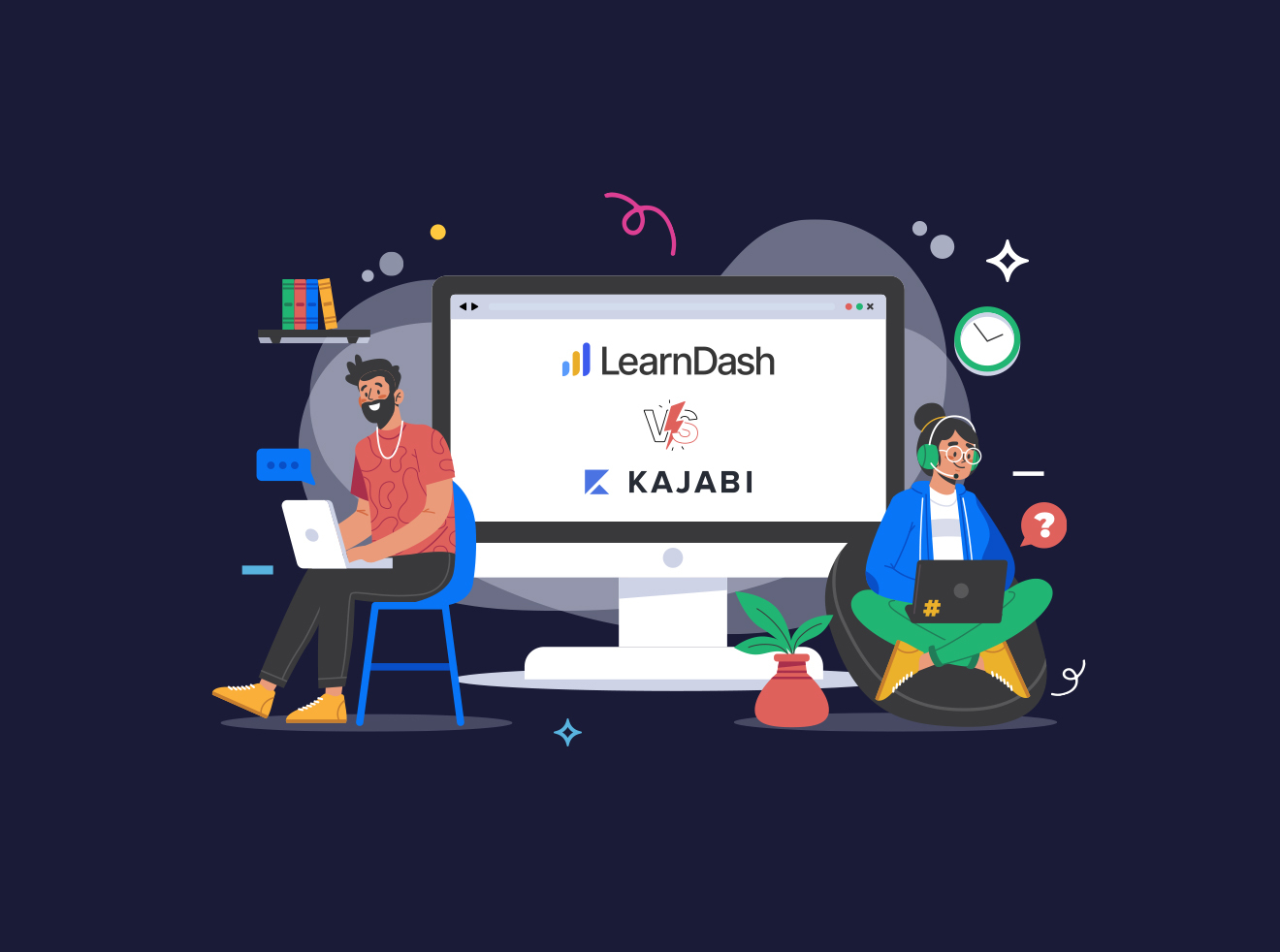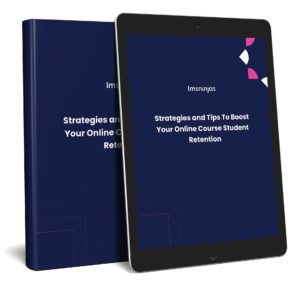In today’s fast-evolving digital landscape, Learning Management Systems (LMS) have become indispensable for driving educational and corporate learning. These platforms don’t just deliver content; they’re pivotal in managing, tracking, and evaluating the learning journey. Whether you’re in charge of training in a corporate environment or overseeing educational courses, an LMS can be the backbone of your educational strategies.
However, as your organization grows and technology advances, you might find yourself at a crossroads: Should you migrate to a new LMS platform, or customize your existing system? This isn’t a decision to take lightly. Each choice – migration and customization – carries its unique set of benefits and drawbacks, and what works for one organization may not be the best fit for another.
Migration or Custom LMS Development?
Imagine standing in front of two doors, each leading to a different approach to optimizing your LMS. One door opens to the world of migration – a journey towards a completely new system that could offer cutting-edge features, streamlined user experience, or perhaps more competitive pricing.
This road, while potentially leading to a more efficient and modern platform, isn’t without its twists and turns. Costs, the time involved in transition, and user retraining are just a few considerations.
Then, there’s the door of customization. Choosing this path means tailoring your existing LMS to fit your specific needs better. This might sound like a straightforward choice, but it’s not without its challenges.
Customization requires a careful evaluation of your current system’s capacity for adaptation and may demand significant development work. Plus, there’s the question of whether tweaking your current system can genuinely keep pace with your long-term educational goals, especially if the base system is already behind the times.
Guiding You to the Right Choice
Our goal here is straightforward: to help you navigate this decision-making maze with clarity and confidence. Understanding the pros and cons of both migration and customization is crucial. But more importantly, aligning these with your organization’s unique requirements, goals, and resource constraints is key. In this article, we’ll delve deeper into these aspects, equipping you with the knowledge to make a choice that resonates with your specific scenario.
Understanding LMS Migration
Definition of LMS Migration
LMS migration, an essential consideration in the realm of digital learning, involves transitioning from your current Learning Management System (LMS) to a new one. It’s a comprehensive process that includes not only the transfer of all your data—such as user details, learning progress, and course content—but also adapting to the functionalities and structure of a new learning environment. This strategic move is often driven by the need for advanced features, better scalability, and an improved learning experience.
Key Reasons for Considering LMS Migration
Deciding to migrate your LMS isn’t a step to be taken lightly, given both the complexity and the costs involved. Yet, several compelling reasons might tip the scales in favor of migration for your organization:
- Enhancing User Experience: If the current LMS isn’t user-friendly, it can hamper the learning experience significantly. For instance, a system that’s difficult to navigate can result in constant queries from users, indicating a need for a more intuitive LMS. A user-friendly LMS not only streamlines learning and development (L&D) programs but can also lead to higher engagement and usage rates.
- Keeping Up with Technological Advances: The rapid evolution in e-Learning technologies means that an outdated LMS can quickly become a hindrance. Modern LMS platforms offer a range of features like AI-powered learning, social learning capabilities, and detailed analytics. If your existing LMS lacks these cutting-edge features or isn’t keeping pace with the latest e-Learning trends, it might be time to consider a switch.
- Necessity for Better Integration and Features: Today’s corporate learning environment often requires integration with various other tools and systems, like CRM software, project management tools, and communication platforms. An LMS that seamlessly integrates with your existing tech stack can significantly enhance efficiency and reduce redundant tasks.
- Supporting Diverse Learning Needs: Your LMS should be versatile enough to accommodate various training needs – from employee training and onboarding to compliance and partner education. Migrating to an LMS that supports multiple use cases can streamline your training process, reduce costs, and eliminate the inconvenience of managing multiple systems.
While LMS migration can seem daunting due to the intricacies involved in transferring content and getting accustomed to a new system, the decision to migrate should hinge on how well your current LMS aligns with your organization’s evolving learning requirements.
If you find that your LMS is falling short in areas like user-friendliness, technological advancements, integration capabilities, or the ability to support different learning modalities, then exploring new LMS options might be the right move for you.
Here are the upsides and downsides of LMS migration to help you make an informed choice.
Pros of LMS Migration
1. Access to Better Features:
When you upgrade to a new LMS, you’re often greeted with an array of advanced features. These enhancements could include cutting-edge analytics, superior assessment tools, and more dynamic learning modules. Such features not only improve the management of courses and content but also enrich the overall learning experience.
2. Enhanced User Experience
The user experience is vital in digital learning. Newer LMS platforms are designed with user-friendliness in mind, featuring intuitive interfaces and learner-centered designs. They might also incorporate AI and machine learning to tailor the learning journey to individual needs, making it more engaging and efficient.
3. Scalability
Your LMS should grow as you do. Migrating to a more capable system ensures that as your learner base and course offerings expand, your LMS can handle the increase smoothly. This scalability is crucial for maintaining a high-quality learning experience without any performance hitches.
4. Improved Security and Compliance
Data security and meeting regulatory compliance are more important than ever. Newer LMS platforms usually offer enhanced security features and are better equipped to comply with legal standards. This means you can worry less about data breaches and more about delivering quality education or training.
Cons of LMS Migration
1. Potential Downtime During Transition:
Migrating to a new LMS can lead to downtime. This break in service might disrupt learning schedules and delay course progress, affecting both instructors and learners.
2. Data Migration Challenges
Transferring data between LMS platforms can be fraught with risks like data loss or corruption. Ensuring all critical data is moved correctly and safely demands careful planning and a lot of effort.
3. Learning Curve for New System
Adopting a new LMS means that your team and learners will need time to get accustomed to it. This learning period can temporarily affect productivity and may initially frustrate users unacquainted with the new system.
4. Cost Implications
Migrating isn’t just about purchasing a new LMS; it also involves expenses related to transferring data, training users, and possible additional resources to manage the transition. These costs can add up, so it’s crucial to consider if the long-term benefits justify the immediate investment.
Deciding whether to migrate to a new LMS requires careful consideration of these pros and cons. You need to balance the improved features, user experience, scalability, and security against the possible downtime, data migration hurdles, initial learning curve, and costs.
While the journey might seem daunting, the benefits of a more efficient, secure, and user-friendly system often outweigh the temporary challenges.
A strategic migration plan, addressing these potential obstacles, can streamline your transition, maximizing the advantages of your new LMS. Remember, your ultimate aim is to enhance the learning environment effectively and efficiently, ensuring it’s well-aligned with your evolving needs and goals.
Understanding LMS Development
Learning Management Systems (LMS) have become the backbone of digital learning in educational and organizational settings. As each organization’s learning needs are unique, customizing an LMS can be crucial for delivering an effective and engaging learning experience.
What is LMS Customization?
When you tailor an LMS to fit your specific needs, you’re engaging in LMS customization. This process involves modifying various aspects of an LMS, such as its features, interface, and the way it integrates with other systems, ensuring it aligns with your organization’s goals, branding, and operational procedures. Imagine having a tool that not only performs its primary function but also looks and feels like an integral part of your organization. That’s what effective LMS customization aims to achieve.
Types of LMS Development and Customization
1. UI/UX Enhancements
The user interface (UI) and user experience (UX) are crucial in ensuring that your LMS is not only functional but also user-friendly and aesthetically in tune with your brand. This might involve reworking the color scheme, layout, or even the overall navigation to make it more intuitive and engaging for users.
2. Feature Additions
You might find that the standard features of an off-the-shelf LMS don’t completely meet your unique requirements. In such cases, adding new features or tweaking existing ones can significantly enhance the effectiveness of your LMS. This could range from adding advanced reporting capabilities to integrating interactive content that makes learning more immersive.
3. Integrations
Integrating your LMS with other systems can streamline operations and provide a seamless experience for users. For example, integrating with customer relationship management (CRM) software, third-party content providers, or even social media platforms can expand the capabilities of your LMS, making it a more powerful tool in your educational arsenal.
Illustration with Examples
Let’s look at some examples to better understand how LMS customization works in real life:
Corporate Integration:
Consider a large corporation that integrates its LMS with its Human Resource Management System (HRMS). This integration allows for automated tracking and reporting of employee training, linking learning outcomes directly to performance evaluations and career development plans. It’s not just about having two systems talking to each other; it’s about creating a cohesive ecosystem where learning and employee management are seamlessly interconnected.
University Customization:
A university might customize its LMS to enhance user engagement. By incorporating features like gamification, social learning forums, and personalized learning pathways, the university caters to a diverse student body, providing an enriched learning environment that acknowledges different learning styles and preferences.
Customizing your LMS isn’t just about making minor tweaks; it’s about reshaping your learning environment to better fit the specific contours of your organization’s needs and aspirations.
By understanding the depth and breadth of customization possibilities, you can transform a standard LMS into a vital tool that resonates with your educators, learners, and administrative staff.
Pros of LMS Development
1. Personalized to Your Specific Needs
Imagine an LMS that feels like it’s crafted just for you and your learners. Customization allows for this personal touch, molding the system to fit your unique goals and learning strategies. This bespoke approach can transform the effectiveness and relevance of your learning environment, making it not just a platform, but a reflection of your educational ethos.
2. Enhanced Engagement and User Satisfaction
An LMS tailored to the needs and preferences of its users can skyrocket engagement and satisfaction. Think about it: a system that users find intuitive and enjoyable leads to a richer learning experience. This is not just about aesthetics; it’s about creating an environment that resonates with the learner’s journey, keeping them motivated and committed.
3. Cost-Effective in the Long Term
There’s a common misconception that customization is always costly. In reality, while there’s an upfront investment, a customized LMS can be more economical over time. How? By aligning with your specific needs, it enhances efficiency, reduces the need for further adjustments or third-party tools, and ultimately saves money that would have been spent rectifying a less-than-perfect system.
4. Compatibility with Existing Workflows
Integrating a new system into existing workflows can be like trying to fit a square peg into a round hole. Customization, on the other hand, means your LMS can be shaped to fit seamlessly into your current operational framework. This compatibility minimizes disruptions and maintains smooth administrative and learning processes.
Cons of LMS Development
1. Can be Time-Consuming
Tailoring an LMS to your exact specifications isn’t an overnight job. It requires careful planning, execution, and testing. For organizations looking for quick deployment, this time factor can be a significant downside.
2. Requires Technical Expertise
Customizing an LMS isn’t typically a DIY project. It demands a certain level of technical skill, either from your in-house team or external experts. This necessity can add to the complexity and cost of the project.
3. Potential for Increased Complexity
There’s a fine line between customization and complication. Over-customizing can lead to a bloated, difficult-to-navigate system that frustrates rather than facilitates. Keeping user experience at the forefront is crucial to avoid falling into this trap.
4. May Face Limitations of the Current Platform
Every LMS has its boundaries. Sometimes, the platform you’re using may not support the level of customization you envision, leading to compromises or even the need to reconsider if migration might be a better option.
How to Decide Between Migration and Customization
The Learning Management System (LMS) serves as the backbone of your digital learning endeavors, whether in educational institutions or corporate settings. The dynamic nature of technological advancements, coupled with evolving organizational needs, often places you at a crossroads: to migrate to a new LMS or to customize the existing one. Here is a structured approach to help you make an informed decision between migration and customization by analyzing critical factors.
1. Assessing Current LMS Limitations and Potentials:
- Identifying Limitations: Start by identifying the limitations of your current LMS. Are you dealing with outdated features, missing integrations, or inadequate security measures?
- Evaluating Potentials: Conversely, evaluate the potential of your current system to meet your evolving needs through customization. How flexible and adaptable is your current LMS?
2. Analyzing Organizational Needs and User Feedback:
- Gathering User Feedback: Collect feedback from both educators and learners to gain valuable insights into your current system’s strengths and weaknesses.
- Aligning with Organizational Goals: Ensure that your decision aligns with your organization’s long-term educational or training objectives.
3. Considering Budget and Resources:
- Cost Analysis: Conduct a cost-benefit analysis to compare the financial implications of migration versus customization. Consider expenses like new licenses, customization, training, and support.
- Resource Availability: Assess the availability of technical resources and expertise required for either migration or customization.
4. Future-proofing: Scalability and Adaptability:
- Scalability Assessment: Evaluate the scalability of both options to ensure they can accommodate growth in terms of user numbers and course content.
- Adaptability to Future Technologies: Choose a path that remains adaptable to emerging technologies to avoid obsolescence.
5. Risk Assessment: Security, Data Loss, and Compliance:
- Security Analysis: Assess the security protocols of your existing and potential new LMS to ensure they meet the requisite standards.
- Data Loss Prevention: Evaluate the risks associated with data migration or customization, and make sure robust data loss prevention measures are in place.
- Compliance Check: Ensure that either option complies with legal and regulatory requirements, especially concerning data protection and privacy.
By adopting a structured and thorough approach to this decision-making process, you can significantly enhance your ability to make an informed and strategic choice. This, in turn, places you in a vantage position to optimize your learning environment, ensuring it remains robust, engaging, and conducive to achieving your overarching learning and development goals. Your informed choice will pave the way for a future-proof and effective learning ecosystem.
Planning and Execution
Embarking on the journey of either migrating to a new Learning Management System (LMS) or customizing the existing one is akin to navigating through uncharted waters. The success of this endeavor hinges significantly on meticulous planning and adept execution. In this section, we will guide you through the critical steps and considerations that form the bedrock of a successful LMS migration or customization project.
1. Best Practices in Planning LMS Development or Migration:
Needs Assessment: Before diving into the project, it’s crucial to conduct a comprehensive needs assessment. Understand your organizational requirements, user needs, and the limitations of your current LMS. This step will set the stage for informed decision-making.
Cost Estimation: Accurate cost estimation is essential. Determine the costs involved in either migration or customization to ensure you allocate an adequate budget for the project. Overspending or underbudgeting can lead to complications down the road.
Technical Evaluation: Assess the technical requirements. Ensure that you have the necessary resources and expertise to carry out the project successfully. This might involve hardware, software, and technical support.
Timeline Development: Establish a realistic timeline with clear milestones. This will help you track the progress of the project and ensure it stays on course.
2. Importance of a Roadmap and Clear Objectives:
Roadmap Creation: Develop a detailed roadmap that outlines the step-by-step process, from the initial planning phase to the final implementation and evaluation. Having a roadmap will keep everyone on the same page and ensure a structured approach.
Objective Setting: Set clear, measurable objectives that align with your organizational goals. These objectives will serve as a guiding beacon throughout the project, helping you stay focused on what you aim to achieve.
3. Involvement of Stakeholders:
Engagement: You can’t go at it alone. Engage key stakeholders, including administrators, educators, learners, and technical teams, from the outset. Their input is invaluable in shaping the project to meet everyone’s needs.
Communication: Maintain open communication channels throughout the project. Keep all stakeholders informed about the project’s progress, challenges, and successes. Transparency fosters trust and collaboration.
Training: Provide necessary training to stakeholders to ensure a smooth adoption and effective utilization of the new or customized LMS. Training ensures that everyone is comfortable with the changes and can make the most of the system.
4. Selecting the Right Partner for Migration/Customization:
Expertise and Experience: Choosing the right partner is crucial. Look for a partner with a proven track record, technical expertise, and experience in LMS migration or customization. Their knowledge can make a world of difference.
Alignment with Organizational Goals: Ensure that your chosen partner understands and aligns with your organizational goals and the unique needs of your users. A partner who shares your vision will work more effectively with your team.
Support and Maintenance: Consider long-term sustainability. Choose a partner who provides robust support and maintenance services. This ensures that your LMS remains efficient and effective in the years to come.
LMS Developments vs LMS Migration
Now that you’ve explored the intricacies of LMS migration and custom LMS development, it’s time to make an informed choice tailored to your organization’s unique needs. Remember, you stand at a crucial crossroads where your decision can significantly impact your learning environment.
Migration offers access to advanced features, scalability, and improved security but may involve downtime and data migration challenges.
Customization provides a personalized, cost-effective solution, enhancing engagement and compatibility, but demands time, technical expertise, and careful planning.
Your ultimate aim is to optimize your learning ecosystem effectively and efficiently, aligning it with your evolving goals.
For personalized advice and solutions tailored to your organization, reach out to our LMS experts. We’re here to help you embark on a successful journey toward a more robust, engaging, and future-proof learning environment.
